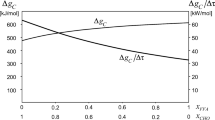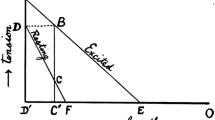Abstract
Various factors appear to control muscle energetics, often in conjunction. This calls for a quantitative approach of the type provided by Metabolic Control Analysis for intermediary metabolism and mitochondrial oxidative phosphorylation. To the extent that direct transfer of high energy phosphates and spatial organization plays a role in muscle energetics however, the standard Metabolic Control Theory does not apply, neither do its theorems regarding control.
This chapter develops the Control Theory that does apply to the muscle system. It shows that direct transfer of high energy phosphates bestows a system with enhanced control: the sum of the control exerted by the participating enzymes on the flux of free energy form the mitochondrial matrix to the actinomyosin may well exceed the 100% mandatory for ideal metabolic pathways. It is also shown how sequestration of high energy phosphates may allow for negative control on pathway flux. The new control theory gives methods functionally to diagnose the extent to which channelling and metabolite sequestration occur.
Similar content being viewed by others
References
Higgins JJ: Dynamics and control in cellular reactions. In: B Chance, RW Estabrook, JR Williamson (eds) Control of Energy Metabolism. Academic Press, New York, 1965, pp 13–46
Kacser H, Burns JA: The control of the flux. In: DD Davies (ed.) Rate Control of Biological Processes. Cambridge Univ. Press, London, 1973, pp 65–104
Kacser H, Burns JA: Molecular democracy: who shares the controls? Biochem Soc Trans 7: 1149–1160, 1979
Savageau MA: The behavior of intact biochemical control systems. Current Topics in Cellular Regulation 6: 63–130, 1972
Heinrich R, Rapoport TA: A linear steady-state treatment of enzymatic chains. General properties, control and effector strength. Europ J Biochem 42: 89–95, 1974
Heinrich R, Rapoport TA: Mathematical analysis of multi-enzyme systems: II. Steady state and transient control. Bio Systems 7: 130–136, 1975
Burns JA, Cornish-Bowden A, Grown AK, Heinrich R, Kacser H, Porteous JW, Rapoport SM, Rapoport T, Stucki JW, Tager JM, Wanders RJA, Westerhoff HV: Control analysis of metabolic systems, Trends Biochem Sci 10: 16, 1985
Kacser H, Sauro HM, Acerenza L: Enzyme-enzyme interactions and control analysis. The case of non-additivity: monomer-oligomer associations. Eur J Biochem 187: 481–491, 1990
Fell DA, Sauro HM: Metabolic control analysis. The effects of high enzyme concentrations. Eur J Biochem 192: 183–187, 1990
Kholodenko BN, Lyubarev AE, Kurganov BI: Control of metabolic flux in a system with high enzyme concentrations and moietyconserved cycles. The sum of the flux control coefficients can drop significantly below unity. Eur J Biochem 210: 147–153, 1992
Kholodenko BN, Westerhoff HV: Metabolic channelling and control of the flux. FEBS Lett 320: 71–74, 1993
Heinrich R, Rapoport SM, Rapoport TA: Metabolic regulation and mathematical models. Prog Biophys Mol Biol 32: 1–83, 1977
Groen AK, Wanders RJA, Westerhoff HV, Van der Meer R, Tager JM: Quantification of the contribution of various steps to the control of mitochondrial respiration. J Biol Chem 257: 2754–2757, 1982
Reder C: Metabolic control theory: a structural approach. J Theor Biol 135: 175–201, 1988
Kholodenko BN: Control of molecular transformations in multienzyme systems: quantitative theory of metabolic regulation. Mol Biol (USSR) 22: 1238–1256, 1988 (English transl, 22: 990–1000)
Fell DA, Sauro HM: Metabolic control and its analysis: additional relationships between elasticities and control coefficients. Eur J Biochem 148: 555–561, 1985
Cascante M, Franco R, Canela EI: Use of implicit methods from general sensitivity theory to develop a systematic approach to metabolic control. II. Complex systems. Mathem Biosci 94: 289–309, 1999
Westerhoff HV, Hofmeyr J-H S, Kholedenko BN: Getting to the inside of cells using metabolic control analysis. Biophys Chem, 1993 (in press)
Srere PA: Complexes of sequential metabolic enzymes. Ann Rev Bioch 56: 89–124, 1987
Srere PA, Ovadi J: Enzyme-enzyme interactions and their metabolic role. FEBS Lett 268: 360–364, 1989
Welch GR, Clegg JS, eds: The organization of cell metabolism. New York, Plenum Press, 1986
Clegg JS: Cellular infrastructure and metabolic organization. In: Current Topics in Cellular Regulation 33: 3–14, 1992
Wallimann T, Wyss, M, Brdiczka D, Nicolay K, Eppenberger HM: Intracellular compartmentation, structure and function of creatine kinase isoenzymes in tissues with high and fluctuating energy demands: the ‘phosphocreatine circuit’ for cellular energy homeostasis. Biochemical J 281: 21–40, 1992.
Srivastava DK, Bernard SA: Biophysical chemistry of metabolic reaction sequences in concentrated enzyme solution and in the cell. Ann Rev of Biophys and Biophys Chem 16: 175–204, 1987
Postma PW, Lengeler JW: Phosphoenolpyruvate: carbohydrate phosphotransferase system of bacteria. Microbiol Rev 49: 232–269
Skulachev VP: Membrane bioenergetics. Springer, Berlin, 1988
Kell DB, Westerhoff HV: Catalytic facilitation and membrane bioenergetics. In: GR Welch (ed.). Organized Multienzyme Systems. Academic Press, New York, 1985, pp 63–138
Gellerich FN, Khuchua ZA, Kuznetsov AV: Influence of the mitochondrial outer membrane and the binding of creatine kinase to the mitochondrial inner membrane on the compartmentation of adenine nucleotides in the intermembrane space of rat liver mitochondria. Biochim Biophys Acta 1140: 327–334, 1993
Saks VA, Rosenstraukh LV, Smirnov VN, Chazov EI: Role of creatine phosphokinase in cellular function and metabolism. Can J Physiol Pharmacol 56: 691–706, 1978
Saks VA, Vasileva E, Belicova Yu O, Kuznetsov AV, Lyapina S, Petrova L, Perov NA: Retarded diffusion of ADP in cardiomyocites: possible role of mitochondrial outer membrane and the creatine kinase in cellular regulation of oxidative phosphorylation. Biochim Biophys Acta 1144: 134–148, 1993
Gellerich FN: The role of adenylate kinase in dynamic compartmentation of adenine nucleotides in the intermembrane space of rat heart mitochondria. FEBS Lett 297: 55–58, 1992
Wyss, M, Wallimann T: Metabolite channelling in aerobic energy metabolism. J Theor Biol 158: 129–132, 1992
Sauro HM, Kacser H: Enzyme-enzyme interactions and control analysis. The case of non-independence: heterologous associations. Eur J Biochem 187: 493–500, 1990
Westerhoff HV, Kell DB: A control theoretical analysis of inhibitor titration assays of metabolic channelling. Comm Mol Cell Biophys 5: 57–107, 1988
Easterby JS: Temporal analysis of the transition between steady states. In: A Cornish-Bowden, ML Cardenas (eds) Control of Metabolic Processes, pp 291–292, Plenum Press, New York, 1990
Kell DB, Westerhoff HV: In: PA Srere, ME Jones, CK Mathews (eds) Structural and Organizational Aspects of Metabolic Regulation, pp 273–289, Wiley-Liss, New York, 1990
Schuster S, Heinrich R: The definitions of metabolic control analysis revisited. BioSystems 27: 1–15, 1992
Westerhoff HV, Van Dam K: Thermodynamics and Control of Biological Free-Energy Transduction. Elsevier, Amsterdam, 1987
Giersch C: Control analysis of metabolic networks. 1. Homogeneous functions and the summation theorems for control coefficients. Eur J Biochem 174: 509–513, 1988
Kholodenko BN, Westerhoff HV: 1992. In: Mazat JP, Schuster S, Rigoulet M (eds) Modern Trends in BioThermoKinetics. Proc 5th BTK Meeting, Bordeaux. Plenum, New York and London, in press
Yanofsky C: Tryptophan synthetase ofE. coli: a multifunctional, multicomponent enzyme. Biochim Biophys Acta 1000: 133–137, 1989
Gutfreund H, Chock PB: Substrate channelling among glycolytic enzymes — fact or fiction. J Theor Biol 152: 117–121, 1991
Wu X, Gutfreund H, Lakatos S, Chock PB: Substrate channelling in glycolysis: a phantom phenomenon. Proc Natl Acad Sci USA 88: 497–501, 1991
Brooks SPJ, Storey KB: Re-evaluation of the glycerol-3-phosphate dehydrogenase/L-lactate dehydrogenase enzyme system. Evidence against the direct transfer of NADH between active sites. Biochem J 278: 875–881, 1991
Smolen P, Keizer J: Kinetics and thermodynamics of metabolite transfer between enzymes. Biophys Chem 38: 241–263, 1990
Ovady J: Physiological significance of metabolic channelling. J Theor Biol 152: 1–22, 1991
Kholodenko BN: Control theory of ‘non-classical’ enzyme systems and methods for the study of metabolic channelling. Biochemistry (USSR) 58: 512–528, 1993
Van Dam K, Van der Vlag J, Kholodenko BN, Westerhoff HV: The sum of the control coefficients of all enzymes on the flux through a group-transfer pathway can be as high as two. Eur J Biochem 212: 791–799, 1993
Kholodenko BN: How do external parameters control fluxes and concentrations of metabolites? An additional relationship in the theory of metabolic control. FEBS Lett 232: 383–386, 1988
Torres NV, Mateo F, Melendez-Hevia E, Kacser H: Kinetics of metabolic pathways. A systemin vitro to study the control of flux. Biochem J 234: 169–174, 1986
Flint HJ, Tateson RW, Barthelmess IB, Porteous DJ, Donachie WD, Kacser H: Control of the flux in the arginine pathway of Neurospora crassa. Modulations of enzyme activity and concentrations. Biochem J 200: 231–246, 1981
Walsh K, Koshland DE Jr: Proc Natl Acad Sci USA 82: 3577–3581, 1985
Jensen PR, Westerhoff HV, Michelsen O: Excess capacity of H+-ATPase and inverse respiratory control in E. coli. EMBO J 12: 1277–1282, 1993
Groen AK, Wanders RJA, Westerhoff HV, Van der Meer R, Tager JM: Quantification of the contribution of various steps to the control of mitochondrial respiration. J Biol Chem 257: 2754–2757, 1982
Kholodenko B, Zilinskiene V, Borutaite V, Ivanovene L, Toleikis A, Praskevicius A: The role of adenine nucleotide translocator in regulation of oxidative phosphorylation in heart mitochondria. FEBS Lett 223: 247–250, 1987
Rigoulet M, Averet N, Mazat J-P, Gurin B, Cohadon F: Redistribution of the flux-control coefficients in mitochondrial oxidative phosphorylation in the course of brain edema. Biochim Biophys Acta 932: 116–123, 1988
Kelety T: Basic enzyme kinetics. Academiai Kiado, Budapest, 1986
Cornish-Bowden A: Principles of enzyme kinetics. Butterworth, London, 1976
Hill TL: Free energy transduction in biology. Academic Press, New York, 1977
Hofmeyr J-H S, Kacser H, Van der Merwe KJ: Metabolic control analysis of moiety conserved cycles. Eur J Biochem 155: 631–641, 1986
Kholodenko BN: Metabolic control theory. New relationships for determining control coefficients of enzymes and response coefficients of system variables. J Nonlinear Biol 1: 107–126, 1991
Fell DA: Metabolic control analysis: a survey of its theoretical and experimental development. Biochem J 286: 313–330, 1992
Kurganov BI: Allosteric enzymes: kinetic behaviour. John Wiley & Son, 1978
Baum H: In: S Fleischer, Y Hatefi, DM McLennan, A Tzagoloff (eds) Molecular Biology of Membranes. Plenum, New York, pp 243–262, 1978
Hackenbrock CR, Gupte SS: 1988. In: JJ Lemasters, CR Hackenbrock, RG Thurman, HV Westerhoff (eds) Integration of Mitochondrial Function. Plenum Press, New York, pp 15–22
Ferguson-Miller S, Rajarathnam K, Kochman J, Schindler M: 1988. In: JJ Lemasters, CR Hackenbrock, RG Thurman, HV Westerhoff (eds) Integration of Mitochondrial Function. Plenum Press, New York, pp 23–32
Kholodenko BN, Demin O, Westerhoff HV: ‘Channelled’ pathways can be more sensitive to specific regulatory signals. FEBS Lett 320: 75–78, 1993
Hak JB, Van Beek JHGM, van Wijhe MH, Eijgelshoven MHJ, Westerhof N: Reduced cardiac ATP-synthetic capacity slows metabolic regulation and reduces contractility. Circ Res, in press 1994
Author information
Authors and Affiliations
Rights and permissions
About this article
Cite this article
Kholodenko, B.N., Cascante, M. & Westerhoff, H.V. Control theory of metabolic channelling. Mol Cell Biochem 133, 313–331 (1994). https://doi.org/10.1007/BF01267963
Issue Date:
DOI: https://doi.org/10.1007/BF01267963




